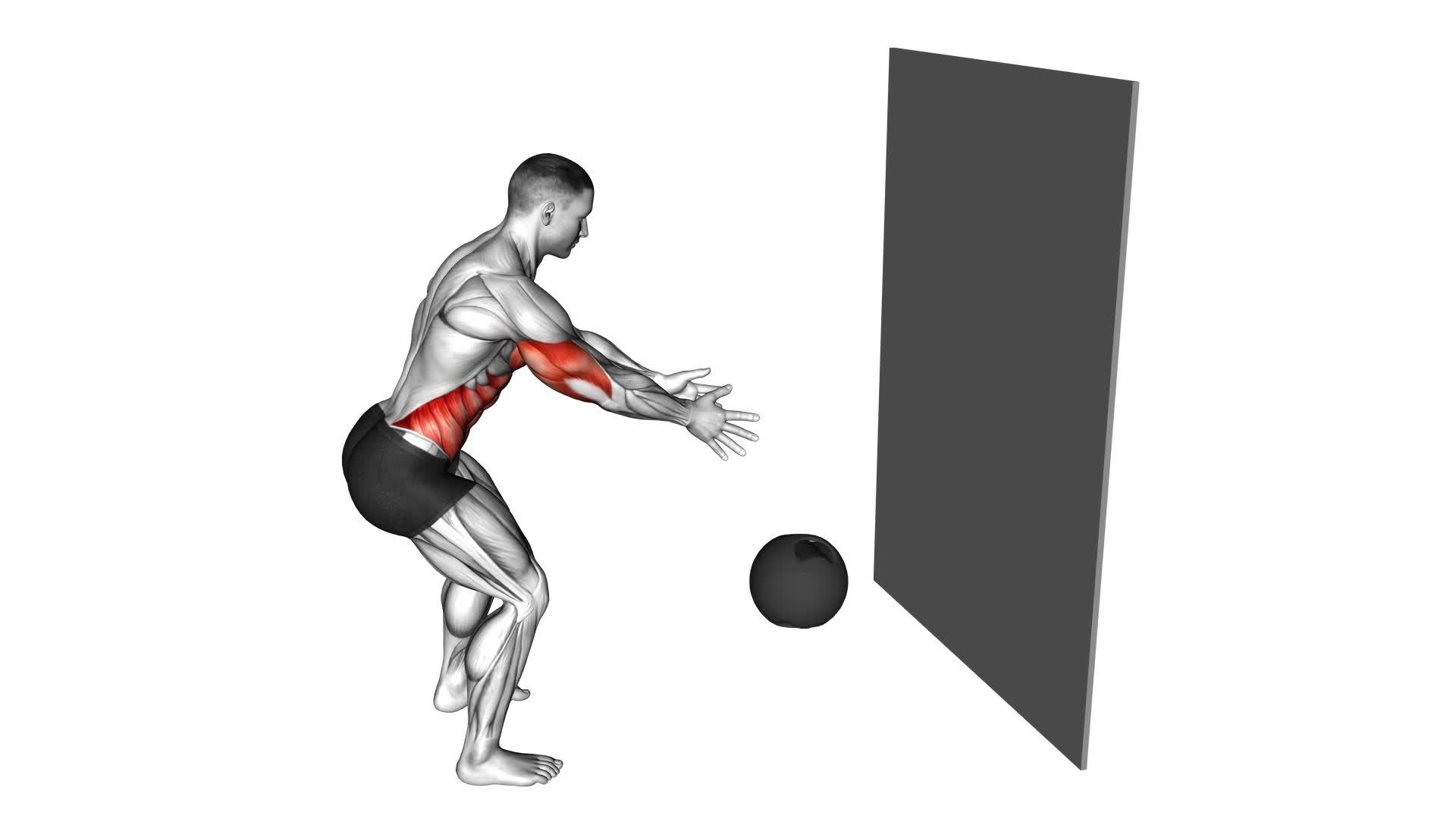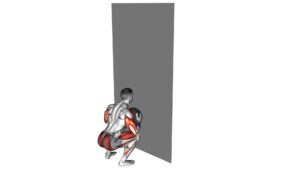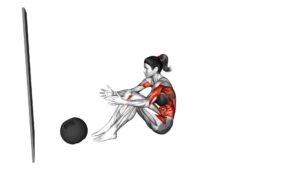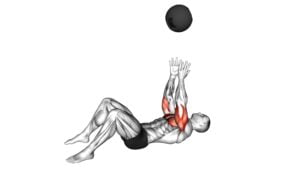Medicine Ball Chest Pass Against Wall – Video Exercise Guide & Tips

Get ready to amp up your upper body workout with the Medicine Ball Chest Pass against the wall.
Watch This Exercise Video
This exercise is a great way to build strength and power in your chest, shoulders, and arms.
In this video exercise guide, you'll learn the proper technique and form, as well as helpful tips to maximize your results.
So grab a medicine ball and get ready to take your workout to the next level.
Let's get started!
Key Takeaways
- The medicine ball chest pass is a great exercise for improving explosive power and engaging multiple muscle groups.
- It enhances coordination and stability, making it suitable for athletes in sports requiring quick bursts of energy.
- The exercise can save time by targeting multiple areas of the body simultaneously.
- Proper technique and form, such as maintaining a firm grip and avoiding using legs for power or arching the back, are essential for maximizing results.
Benefits of the Medicine Ball Chest Pass
You can experience numerous benefits by incorporating the medicine ball chest pass into your workout routine.
One of the main advantages of this exercise is its ability to improve explosive power. The medicine ball chest pass requires you to generate force and power from your chest, shoulders, and arms, which translates to increased explosive strength. This explosive power is essential for athletes participating in sports that require quick bursts of energy, such as basketball, soccer, or tennis.
Another benefit of incorporating the medicine ball chest pass into your workout routine is that it can be used as part of a full-body workout. This exercise engages multiple muscle groups, including your chest, shoulders, triceps, and core. By involving these muscle groups in one exercise, you can save time and target multiple areas of your body simultaneously.
Incorporating the medicine ball chest pass into your full-body workout can also enhance your coordination and stability. As you perform the exercise, you must maintain proper form and balance while generating power. This coordination and stability can translate to improved performance in sports and daily activities.
Now that you understand the benefits of the medicine ball chest pass, let's move on to discussing the equipment needed for this exercise.
Equipment Needed for the Exercise
To perform the medicine ball chest pass against the wall, you'll need a medicine ball and a sturdy wall. Here's a breakdown of the equipment needed for this exercise:
- Medicine Ball: Choose a medicine ball that suits your fitness level and strength. The weight of the ball will depend on your abilities and goals. Opt for a ball with a textured surface for better grip.
- Sturdy Wall: Find a wall that can withstand the force of the chest pass. Make sure it's free from any obstacles and has enough space for you to perform the exercise comfortably. A concrete or brick wall is ideal for this exercise.
- Exercise Modifications and Alternatives: If you don't have access to a medicine ball, you can still work on similar muscle groups with alternative exercises. Here are some options:
- Dumbbell Chest Press: Lie on a bench and hold a dumbbell in each hand. Press the dumbbells up towards the ceiling, focusing on engaging your chest muscles.
- Resistance Band Chest Press: Attach a resistance band to a sturdy anchor point and hold the handles in each hand. Step back to create tension in the band and press your hands forward, mimicking the chest pass motion.
- Plyometric Push-ups: Perform explosive push-ups by pushing off the ground with enough force to lift your hands off the floor. This exercise challenges your chest muscles in a similar way to the medicine ball chest pass.
Remember to consult with a fitness professional before attempting any exercise modifications or alternatives to ensure proper form and technique.
Proper Technique and Form for the Chest Pass Against the Wall
To perform the medicine ball chest pass against the wall with proper technique and form, it's important to focus on generating power from your chest and core muscles. The chest pass is a beneficial exercise that targets your upper body, specifically your chest, shoulders, and triceps. By incorporating this exercise into your routine, you can improve your upper body strength, power, and explosiveness.
To execute the chest pass correctly, start by standing about two to three feet away from a sturdy wall. Hold the medicine ball with both hands at chest level, elbows bent and close to your body. Engage your core and exhale forcefully as you push the ball forward, extending your arms fully and releasing the ball towards the wall. As you release the ball, make sure to maintain a firm grip and follow through with your arms.
To get the most out of the chest pass, avoid common mistakes such as using your legs to generate power or arching your back. Remember, the power should come from your chest and core muscles, not your lower body. Additionally, be mindful of your posture and keep your back straight throughout the exercise.
Incorporating the medicine ball chest pass into your workout routine can enhance your upper body strength and power. By focusing on proper technique and form, you can maximize the benefits of this exercise and avoid common mistakes.
Variations to Challenge Your Upper Body Muscles
Now let's explore some variations that will really challenge your upper body muscles.
Weighted push-up variations, such as using a medicine ball or adding resistance bands, can increase the intensity of this exercise and target different muscle groups.
Another effective variation is the overhead medicine ball throw, which not only engages your upper body muscles but also incorporates explosive power and coordination.
These variations will help you take your upper body workout to the next level.
Weighted Push-Up Variations
Try incorporating these 5 challenging weighted push-up variations into your upper body workout routine:
- Weighted Push-Ups with Dumbbells: Place a dumbbell on each side of your hands while performing push-ups. This adds resistance and intensifies the workout for your chest, shoulders, and triceps.
- Plyometric Push-Ups: Start in a regular push-up position and explosively push yourself off the ground, clapping your hands together before landing back in the starting position. This variation increases power and explosiveness in your upper body.
- Decline Weighted Push-Ups: Elevate your feet on a bench or step and place a weight plate on your back. This targets your upper chest and shoulders more effectively.
These weighted push-up modifications and chest pass alternatives are excellent ways to challenge your upper body muscles and take your workout to the next level. Incorporate these variations into your routine for increased strength and muscle development.
Overhead Medicine Ball Throws
Challenge your upper body muscles with various variations of overhead medicine ball throws. These explosive upper body exercises are a great way to strengthen your shoulders, chest, and arms.
To perform an overhead medicine ball throw, start by standing with your feet shoulder-width apart and holding a medicine ball with both hands. Bring the ball overhead, keeping your core engaged and your back straight. Bend your knees slightly, then forcefully extend your arms and throw the ball upwards, aiming for maximum height and distance.
As you release the ball, remember to use your upper body strength to generate power. This exercise not only targets your upper body muscles but also improves your explosive power and coordination.
Incorporate overhead medicine ball throws into your workout routine to take your upper body strength to the next level.
Tips for Maximizing Your Results With This Exercise
To maximize your results with the medicine ball chest pass against the wall exercise, it's crucial to focus on proper form techniques.
Ensure that you have a stable stance, engage your core, and maintain a neutral spine throughout the movement.
Additionally, to increase power and speed, emphasize explosive movements while throwing the ball and catching it with force.
Proper Form Techniques
To maximize your results with the medicine ball chest pass against the wall, consistently focus on maintaining proper form. Proper form is crucial for improving strength and preventing injuries during this exercise.
Here are three important techniques to keep in mind:
- Stance: Stand facing the wall with your feet shoulder-width apart. Keep your knees slightly bent and maintain a stable base throughout the movement.
- Core Engagement: Engage your core muscles by tightening your abs and squeezing your glutes. This will help stabilize your body and transfer power from your lower body to your upper body.
- Arm Extension: As you pass the medicine ball, fully extend your arms forward and push it forcefully against the wall. This will maximize the power and speed of the throw, engaging your chest and arm muscles effectively.
Increasing Power and Speed
To maximize your results with the medicine ball chest pass against the wall, focus on increasing power and speed.
Power training is essential for enhancing your performance in various sports and activities. By incorporating power training exercises like the medicine ball chest pass, you can improve your explosive strength and generate more force.
To increase power, make sure to use a challenging weight of medicine ball that allows you to exert maximum effort during each repetition. Additionally, focus on speed when performing the exercise. By executing the chest pass with quick and explosive movements, you can further enhance your power output.
Agility drills can also be beneficial for improving your speed and reaction time, which can directly translate into increased power. Incorporate exercises like ladder drills, cone drills, and shuttle runs to enhance your agility and overall power.
Safety Precautions and Common Mistakes to Avoid
To ensure your safety and prevent common mistakes, follow these guidelines when performing the Medicine Ball Chest Pass Against Wall exercise:
- Use the appropriate size and weight of the medicine ball: Choosing a medicine ball that's too heavy can strain your muscles and increase the risk of injury. Conversely, using a ball that's too light may not provide enough resistance for an effective workout. Select a weight that challenges you without compromising your form.
- Maintain proper form and technique: Stand facing a wall with your feet shoulder-width apart. Hold the medicine ball at chest level with both hands, elbows bent. Push the ball forward explosively, extending your arms fully as you release the ball. Catch the ball as it rebounds off the wall and immediately repeat the movement. Keep your core engaged and your back straight throughout the exercise to avoid strain on your lower back.
- Start with a warm-up and gradually increase intensity: It's important to warm up your muscles before performing any exercise. Prior to the Medicine Ball Chest Pass Against Wall exercise, engage in a light cardio activity such as jogging or jumping jacks. Begin with a lighter ball and gradually increase the weight as you build strength and confidence.
Frequently Asked Questions
How Many Sets and Reps Should I Do for the Medicine Ball Chest Pass Against the Wall?
To maximize the benefits of incorporating medicine ball exercises into your workout routine, it's important to know how many sets and reps to do for the medicine ball chest pass against the wall.
Without the context of the specific exercise, it's difficult to provide an exact answer. However, a general guideline for resistance training is to aim for 2-3 sets of 8-12 reps.
Remember to consult with a fitness professional for personalized recommendations and to ensure proper execution of the exercise.
Can I Use a Different Type of Ball Instead of a Medicine Ball for This Exercise?
Yes, you can use a different type of ball for the chest pass exercise. However, it's recommended to use a medicine ball because it offers specific benefits.
The medicine ball's weight and size help to develop upper body strength and power. It also improves core stability and coordination.
Using a medicine ball ensures that you're challenging your muscles in the most effective way for this exercise.
Is This Exercise Suitable for Beginners or Should It Only Be Done by Advanced Athletes?
For beginners, the Medicine Ball Chest Pass Against Wall exercise might be challenging at first, but with practice, you can improve your strength and power.
This exercise isn't limited to advanced athletes; it can benefit anyone who wants to enhance their upper body and core strength.
Beginners can start with a lighter weight medicine ball or even a softer ball, gradually increasing the weight and intensity as they progress.
Can the Medicine Ball Chest Pass Against the Wall Help Improve My Throwing Strength in Other Sports?
Improving throwing strength in other sports can be achieved through the medicine ball chest pass against the wall. This exercise offers numerous benefits, including increased power and accuracy in your throws.
By engaging your chest, shoulders, and arms, it helps to build upper body strength necessary for strong throws.
The repetitive motion of throwing the medicine ball against the wall also helps to improve your coordination and timing, making you more effective in other sports that require throwing skills.
Are There Any Modifications or Adaptations for Individuals With Shoulder or Wrist Injuries?
For those dealing with shoulder or wrist injuries, modifications and adaptations can be made to the medicine ball chest pass against the wall exercise.
It's important to consult with a healthcare professional or a qualified trainer to ensure that the exercise is safe and appropriate for your specific condition.
They may recommend using a lighter medicine ball, adjusting the distance from the wall, or even opting for alternative exercises that put less stress on the affected areas.
Conclusion
In conclusion, the medicine ball chest pass against the wall is a highly effective exercise for strengthening and toning the upper body muscles.
It requires minimal equipment and can be easily modified to suit different fitness levels.
By following proper technique and form, and implementing variations to challenge yourself, you can maximize your results with this exercise.
Remember to always prioritize safety and avoid common mistakes to ensure a successful workout.

Author
Years ago, the spark of my life’s passion ignited in my mind the moment I stepped into the local gym for the first time. The inaugural bead of perspiration, the initial endeavor, the very first surge of endorphins, and a sense of pride that washed over me post-workout marked the beginning of my deep-seated interest in strength sports, fitness, and sports nutrition. This very curiosity blossomed rapidly into a profound fascination, propelling me to earn a Master’s degree in Physical Education from the Academy of Physical Education in Krakow, followed by a Sports Manager diploma from the Jagiellonian University. My journey of growth led me to gain more specialized qualifications, such as being a certified personal trainer with a focus on sports dietetics, a lifeguard, and an instructor for wellness and corrective gymnastics. Theoretical knowledge paired seamlessly with practical experience, reinforcing my belief that the transformation of individuals under my guidance was also a reflection of my personal growth. This belief holds true even today. Each day, I strive to push the boundaries and explore new realms. These realms gently elevate me to greater heights. The unique combination of passion for my field and the continuous quest for growth fuels my drive to break new ground.







